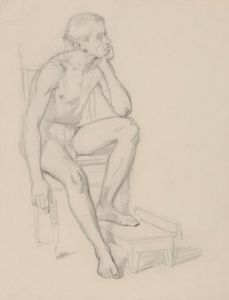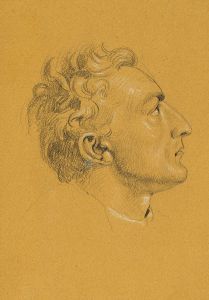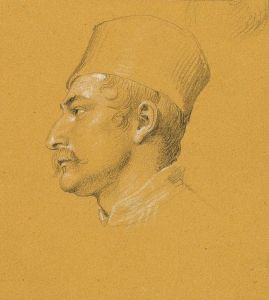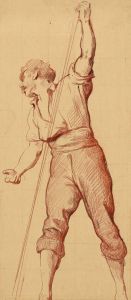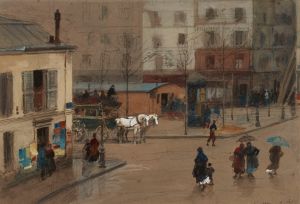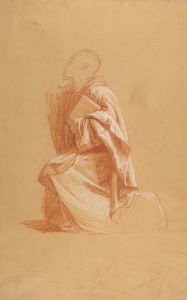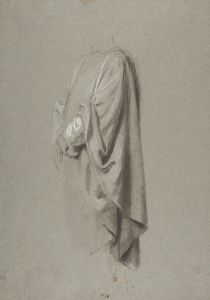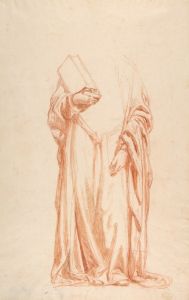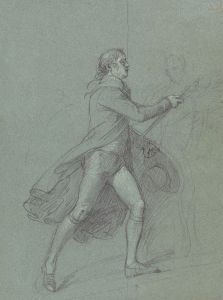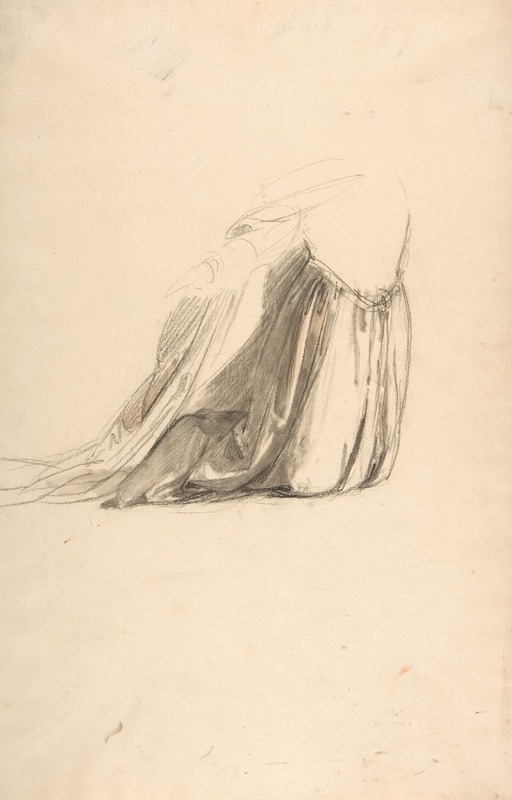
Drapery Study for Sainte Clotilde
A hand-painted replica of Isidore Pils’s masterpiece Drapery Study for Sainte Clotilde, meticulously crafted by professional artists to capture the true essence of the original. Each piece is created with museum-quality canvas and rare mineral pigments, carefully painted by experienced artists with delicate brushstrokes and rich, layered colors to perfectly recreate the texture of the original artwork. Unlike machine-printed reproductions, this hand-painted version brings the painting to life, infused with the artist’s emotions and skill in every stroke. Whether for personal collection or home decoration, it instantly elevates the artistic atmosphere of any space.
Isidore Pils, a notable French painter of the 19th century, is recognized for his contributions to historical and religious art. One of his works, "Drapery Study for Sainte Clotilde," exemplifies his skill in capturing the intricate details of fabric and clothing, which was a significant aspect of his artistic practice. This study is part of his preparatory work for a larger project, reflecting his meticulous approach to composition and form.
Isidore Pils was born on July 19, 1813, in Paris, France. He studied under François-Édouard Picot at the École des Beaux-Arts in Paris, where he honed his skills in classical painting techniques. Pils gained recognition early in his career, winning the prestigious Prix de Rome in 1838 for his painting "Saint Peter Healing a Lame Man at the Door of the Temple." This accolade allowed him to study in Rome, where he was influenced by the works of the Old Masters and the grandeur of Renaissance art.
"Drapery Study for Sainte Clotilde" is a testament to Pils' dedication to the preparatory process in painting. Drapery studies are crucial for artists, as they allow them to explore the play of light and shadow on fabric, understand the movement and flow of materials, and accurately depict the textures and folds that add realism to their figures. In this study, Pils would have focused on the garments associated with Sainte Clotilde, a significant historical and religious figure in France.
Sainte Clotilde, also known as Saint Clotilda, was the wife of King Clovis I and played a pivotal role in his conversion to Christianity, which subsequently led to the Christianization of the Frankish kingdom. Her influence and legacy made her a popular subject in religious art, and Pils' interest in depicting her reflects the 19th-century French fascination with national history and religious themes.
Pils' ability to render fabric with precision and sensitivity is evident in this study. The attention to detail in the folds and the subtle gradations of light and shadow demonstrate his mastery of the medium. Such studies were essential for artists of his time, as they provided a foundation for the final composition, ensuring that the figures were not only anatomically correct but also aesthetically pleasing.
Throughout his career, Isidore Pils was known for his large-scale historical and religious paintings, including works like "The Death of a Sister of Charity" and "Rouget de Lisle Singing La Marseillaise." His works were well-received, and he was appointed as a professor at the École des Beaux-Arts, where he influenced a new generation of artists.
"Drapery Study for Sainte Clotilde" is a reflection of Pils' commitment to the academic traditions of painting, where preparatory studies played a crucial role in the artistic process. This work not only highlights his technical skills but also his dedication to capturing the essence of historical and religious narratives through art.






